Quiz 3: Premolars
1/161
There's no tags or description
Looks like no tags are added yet.
Name | Mastery | Learn | Test | Matching | Spaced |
|---|
No study sessions yet.
162 Terms
function of premolars
holding and grinding
calcification of maxillary first premolar
1 ½ -1 ¾ years
eruption of maxillary first premolar
10-11 years
maxillary and mandibular premolars are succedaneous/nonsuccedaneous
succedaneous
roots of max 1st PM are ________ then that of max 2nd PM
shorter
when compared to anterior teeth, crown dimension of maxillary PMs are shorter in what dimension
occluso-cervically
crowns of max PM and max M are ________ bucco-lingually than mesio-distally
wider
CEJ curvature _________ as the teeth move posteriorly
decrease
geometric outline of max 1st/2nd PM from facial and lingual view
trapezoid
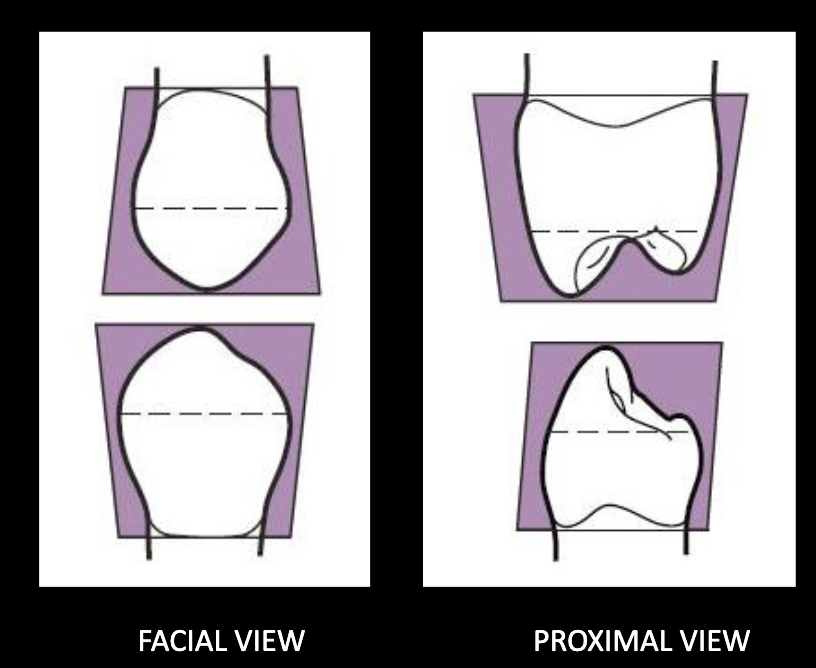
geometric outline of max 1st/2nd PM from proximal view
trapezoid
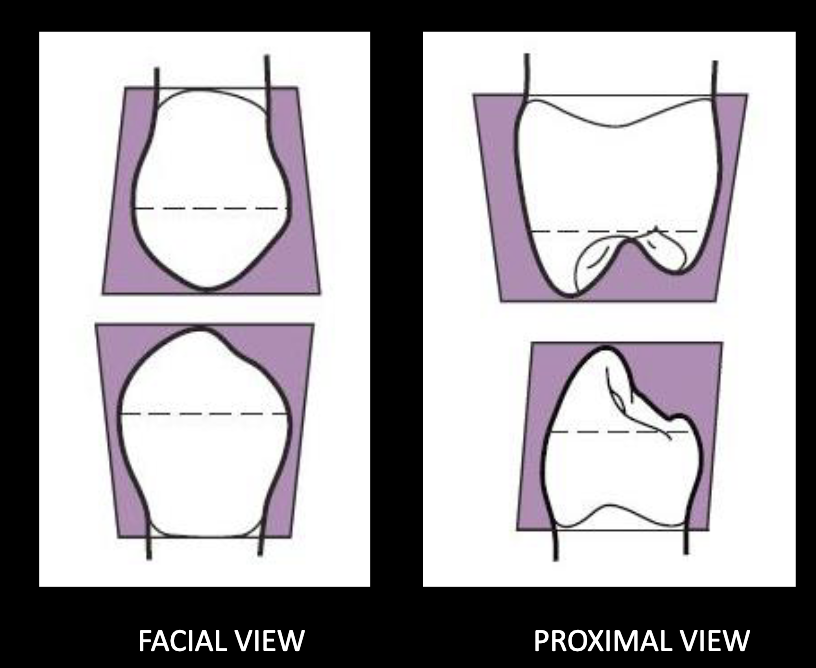
geometric outline of mand PMs from proximal view
rhomboid
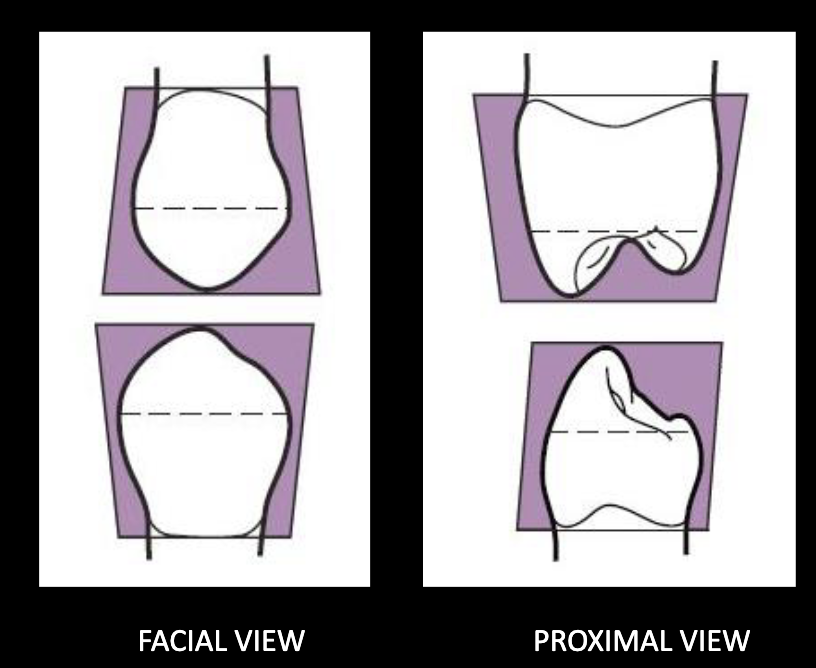
max PM develop from __ lobes
4 (3 facial + 1 lingual cusp)
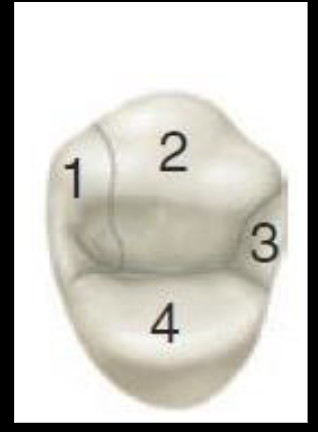
mand PM develop from __ lobes. mand 1st PM? mand 2nd PM?
4 or 5
mand 1st = 4 lobes
mand 2nd = 4 or 5 lobes
max 1st PM have ___ well defined cusps
2 (buccal and lingual)
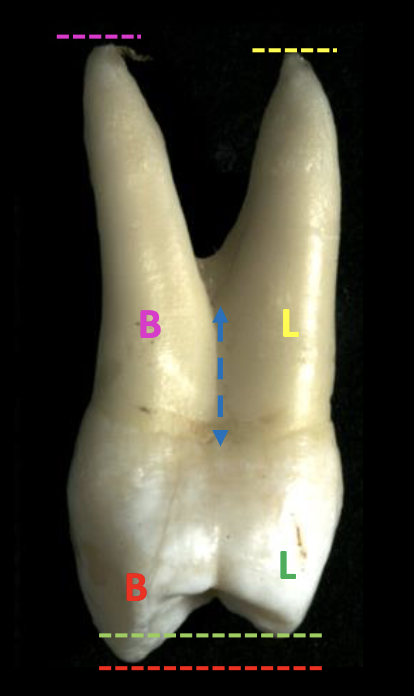
buccal cusp of max 1st PM is __ mm longer than the lingual cusp
1 mm
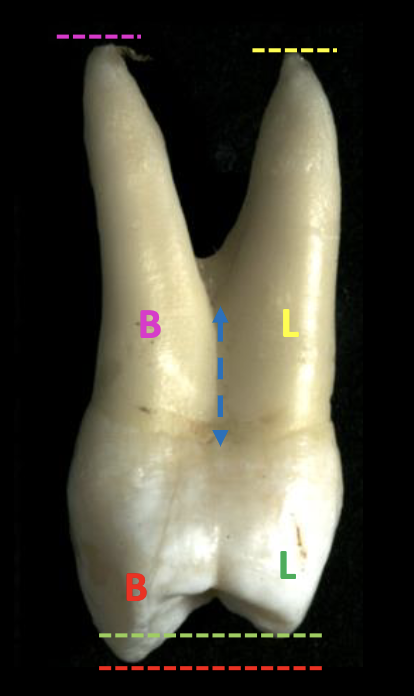
most ideal anatomical form of max first PM have __ roots
2 (buccal and lingual)
which root of max 1st PM is larger? which one is slightly longer?
lingual root is LARGER
buccal root is slightly LONGER
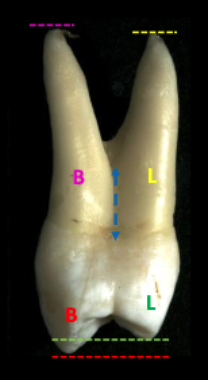
max 1st PM has a long root trunk that makes up about ___ the root length
1/2
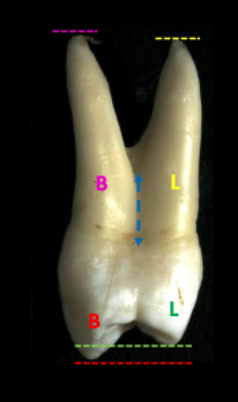
which tooth has a long root trunk that makes up about 1/2 the root length?
max 1st PM
what is the largest PM tooth?
max 1st PM
Mesial cusp slope of the buccal cusp is _________ than the distal cusp slope on max 1st PM
straight and longer

Distal cusp slope of buccal cusp is more __________ than mesial cusp slope of buccal cusp on max 1st PM
curved and shorter
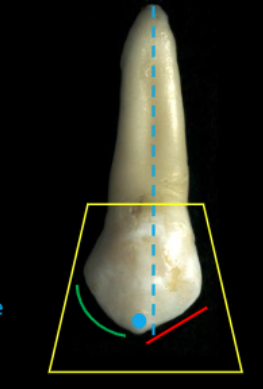
Generally, the buccal cusp is _____ to a line bisecting the buccal surface of the crown and root
distal
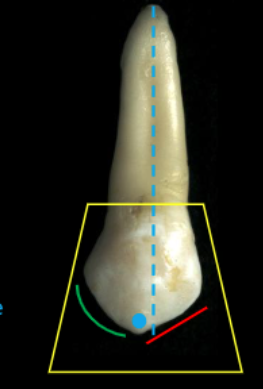
which tooth has a prominent facial/buccal ridge with depressions on either side?
max 1st PM
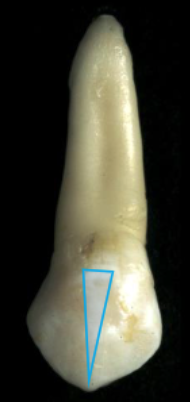
distal HOC of max 1st PM
middle 1/3
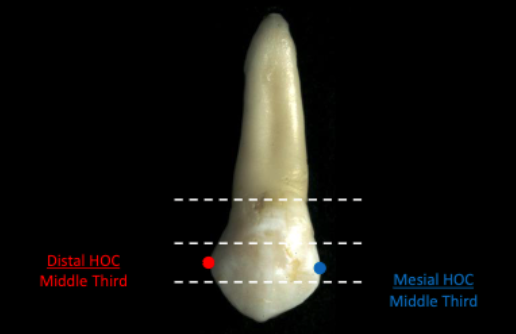
mesial HOC of max 1st PM
middle 1/3
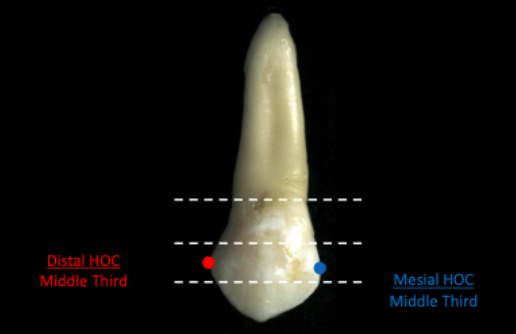
what depression is unique to the max 1st PM?
mesial marginal ridge developmental groove
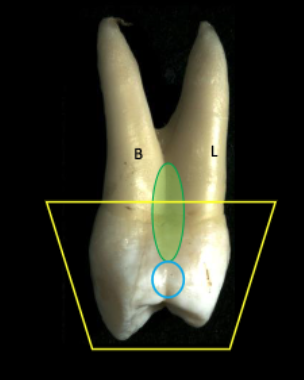
the mesial marginal ridge developmental groove is in line with
the central groove occlusally
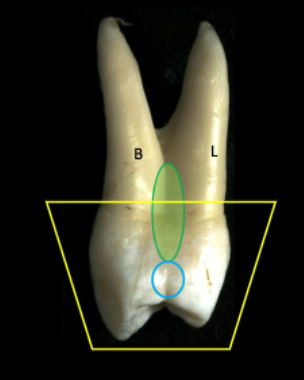
the mesial marginal ridge developmental groove runs from where to where on the max 1st PM?
occlusal to mesial
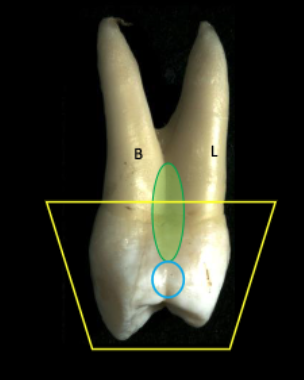
what is the marked depression cervical to the mesial contact area on max 1st PM called?
mesial developmental depression (AKA canine fossa) which often continues apically into the roots into the bifurcation
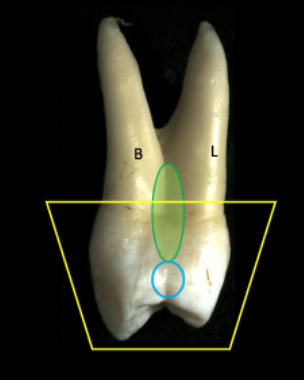
clinical relevance of marked root depression (mesial developmental depression aka canine fossa)
perio disease
challenges during operative procedures
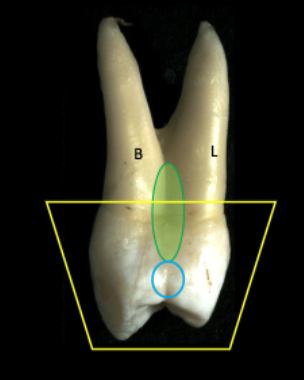
facial HOC of max 1st PM
cervical 1/3
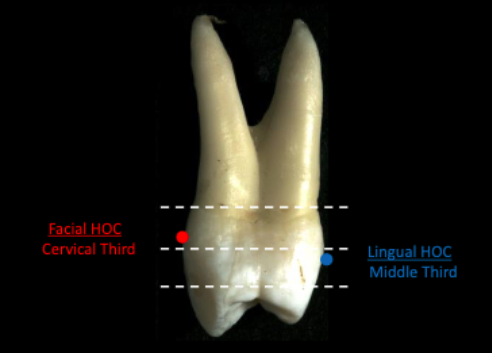
lingual HOC of max 1st PM
middle 1/3
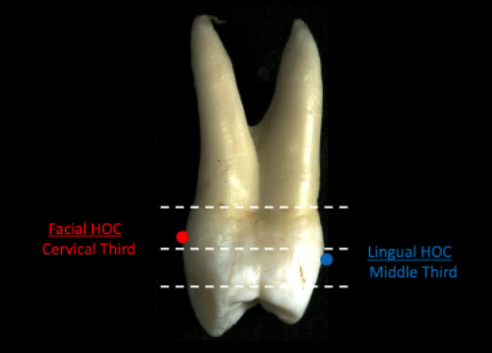
crown and root of max 1st PM converge…?
lingually
lingual cusp of max 1st PM is ________ mesiodistally than the buccal cusp so you can see portions of the buccal cusp from the lingual view
narrower
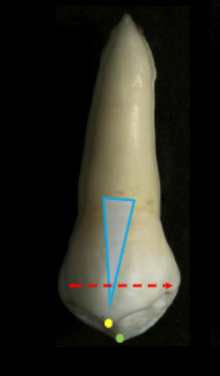
a _______ may be present on max 1st PM that terminates at the point of lingual cusp
lingual ridge
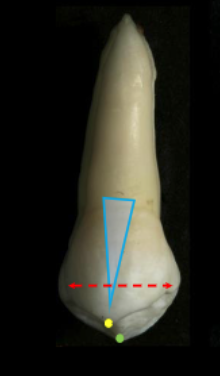
The lingual Cusp tip on max 1st PM is more pointed and sits ______- to the buccal cusp tip.
mesial
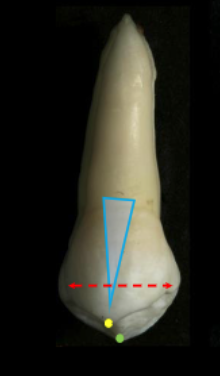
t/f: there is a developmental groove/depression on the distal surface of max 1st PM
false. root trunk is flattened on distal surface)
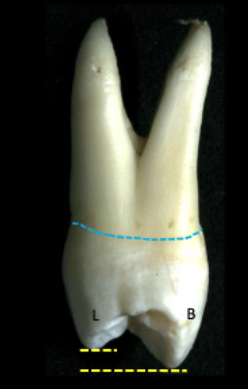
which curvature of CEJ is less on max 1st PM (distal or mesial?)
distal
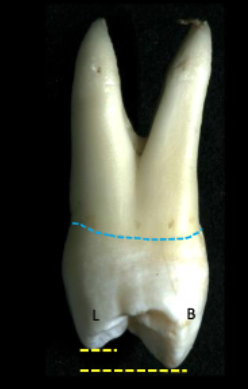
which cusp is shorter on max 1st PM (lingual or buccal)
lingual (about 1 mm)
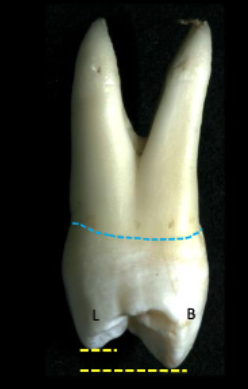
max 1st PM occlusal shape
hexagonal
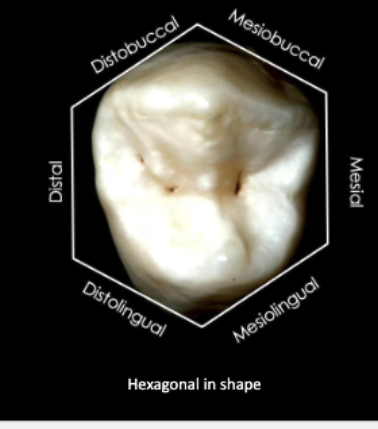
what depression is bordered by the distobuccal and mesiobuccal developmental grooves?
distal and mesial triangular fossae
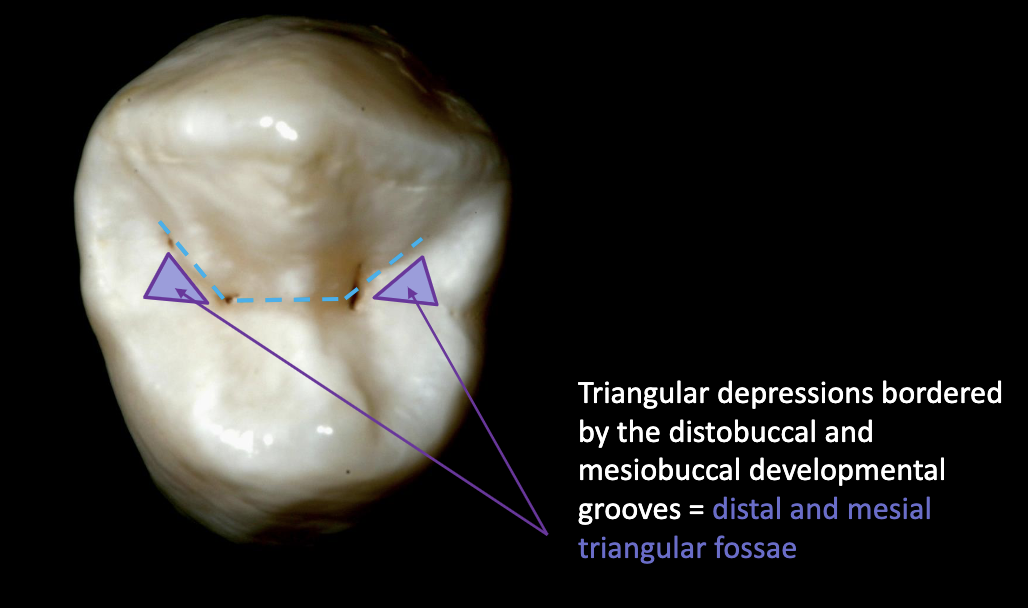
what grooves exist on occlusal surface of max 1st PM
distobuccal developmental groove
mesiobuccal developmental groove
central groove
mesial marginal ridge developmental groove
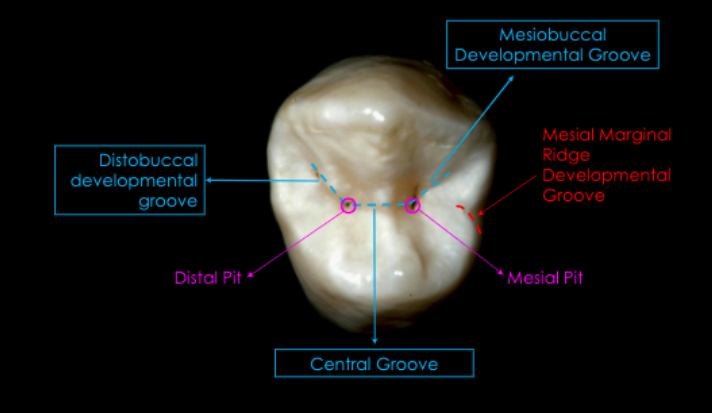
what pits exist on occlusal surface of max 1st PM
distal pit
mesial pit
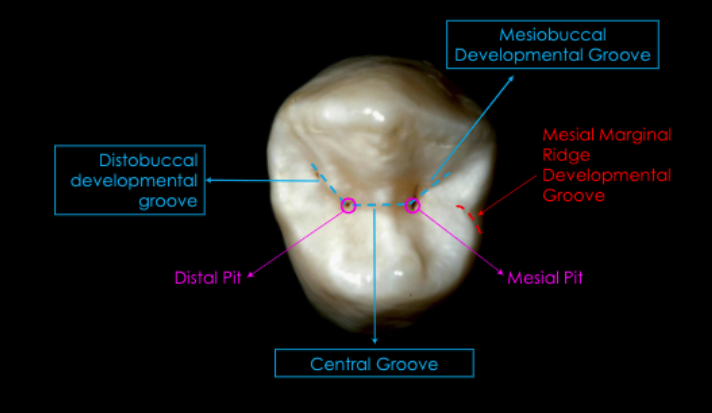
does the max 1st PM have triangular ridges?
yes (2) buccal and lingual triangular ridge together form a transverse ridge
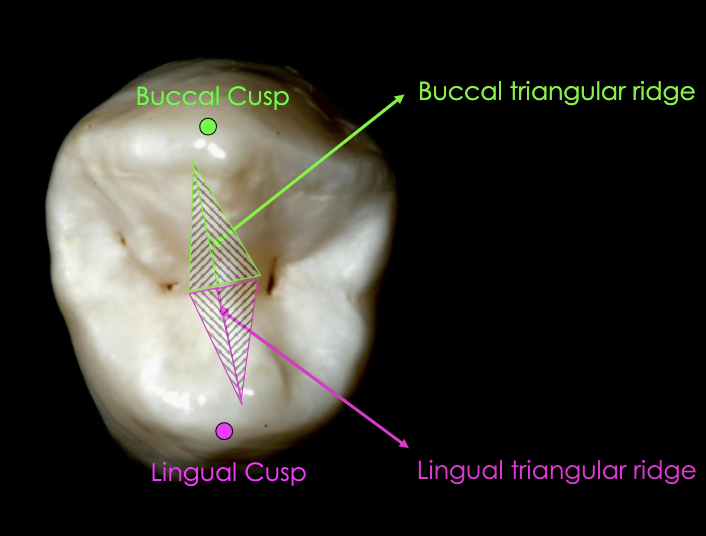
a transverse ridge is formed by joining of
buccal and lingual triangular ridges
triangular ridges on max 1st PM descend from ________ of posterior teeth toward _______ of occlusal surface
cusp tips; central part
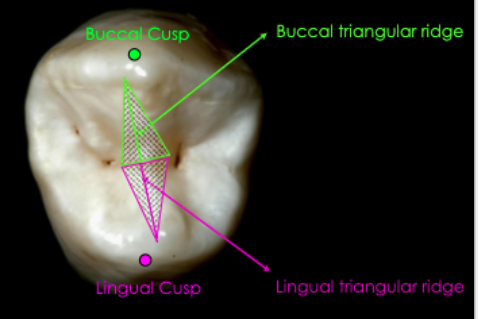
what is the “rule of singh” when applied to max posterior teeth?
Looking at the Occlusal View, with the lingual side oriented towards you, identify the Mesial side of the tooth. Whichever side the mesial side is on, that is the side of the mouth the tooth is on
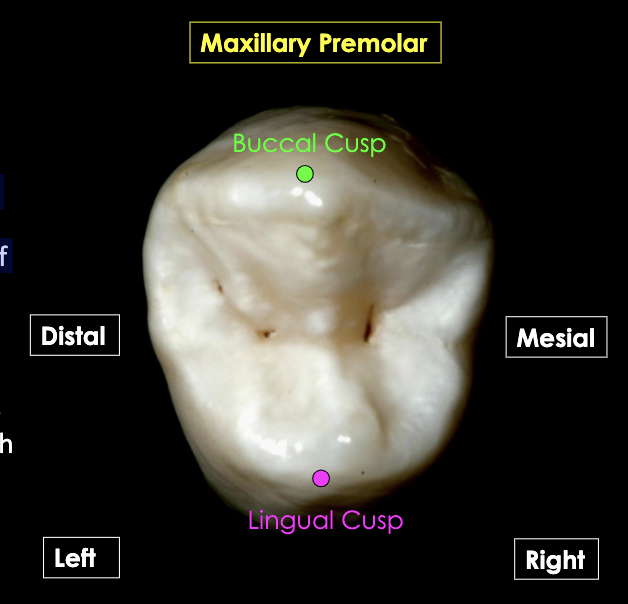
what is the “rule of singh” when applied to mand posterior teeth?
Opposite of the maxillary arch. Identify the mesial side of the tooth and then that tooth comes from the opposite side of the mouth.
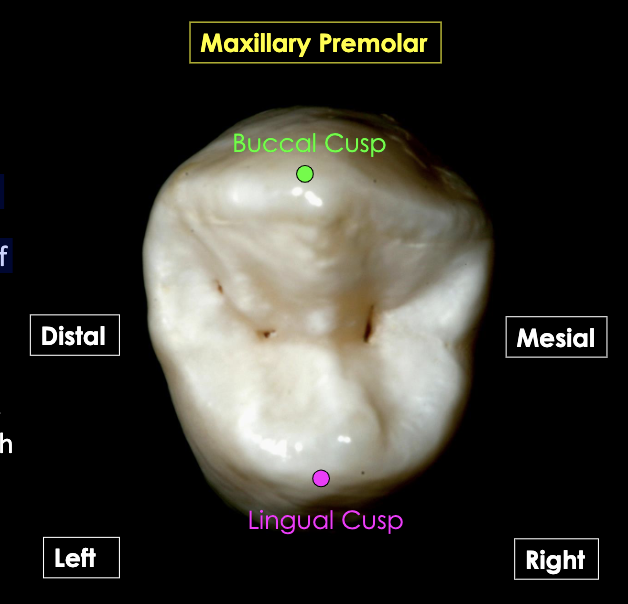
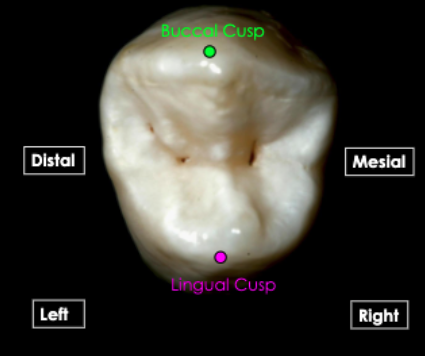
tooth ID
max PM
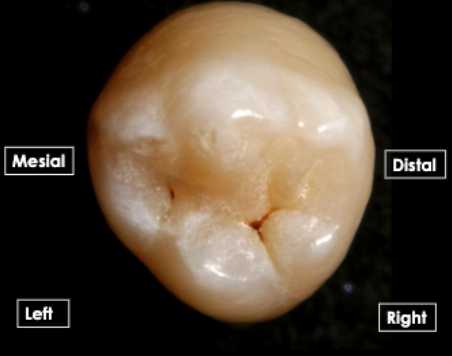
tooth ID
mand PM
max PM tooth numbers
4,5, 12, 13
mand PM tooth numbers
20, 21, 28, 29
cross section of max 1st PM shape
kidney shaped, figure 8, hourglass
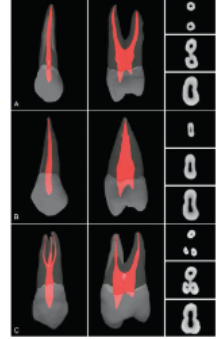
max 1st PM has 2 canals __% of the time
90%
max 1st PM has 3 canals __% of the time
6%
max 1st PM has 1 canal __% of the time
4%
how many pulp horns does the 1st max PM have?
2 pulp horns (buccal and lingual)
root canal of max 1st PM is very broad ___________ and narrow _______-
very broad buccolingually and narrow mesiodistally
max 1st PM usually has ___ roots
2 (buccal, lingual)
max 1st PM Root bifurcates at approximately __ of the root length
½
max 1st PM has a deep concavity on the ______ side of the root
mesial
max 1st PM has a buccal root that is slightly ______- than the lingual root
longer (but sometimes nearly equal in length)
calcification of max 2nd PM
2-2.25 years
eruption of max 2nd PM
10-12 years
largest premolar tooth in overall dimension
1st max PM
t/f: the max 2nd PM also has a mesial marginal ridge developmental groove
false (this groove is unique to max 1st PM)
which buccal cusp slope is longer on max 2nd PM?
distal is longer (but on max 1st PM, mesial cusp slope is longer than distal)
max 2nd PM usually has __ roots
1
which max PM root is longer?
max 2nd PM root is longer than max 1st PM
Max 2nd PM is smaller than Max 1st PM in all aspects, EXCEPT
the length of the root

in general, max 2nd PM is..? (compared to max 1st PM)
smaller and more rounded (buccal cusp not as long or as pointed)
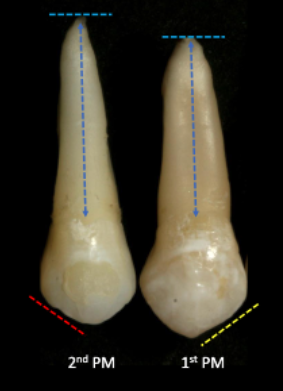
max 2nd PM usually has __ root canals
1
Distal Cusp Slope of Buccal Cusp is ____ than mesial cusp slope on max 2nd PM
longer
distal HOC of max 2nd PM
middle 1/3

mesial HOC of max 2nd PM
middle 1/3
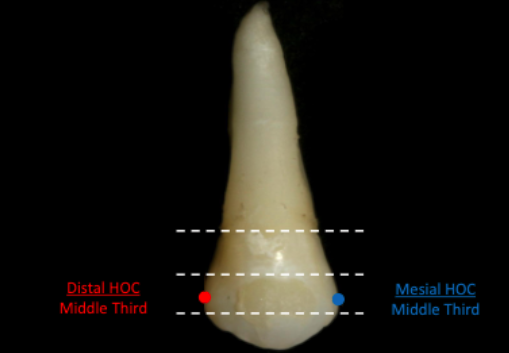
buccal and lingual cusps on max 2nd PM are
nearly equal in height
what appears on the mesial side of the single tapered root of max 2nd PM?
shallow developmental groove
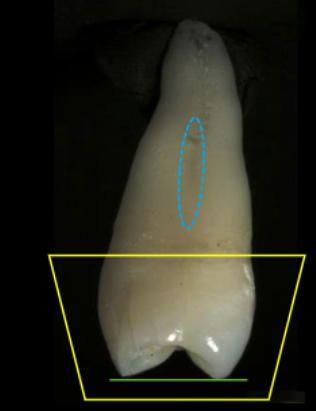
facial HOC of max 2nd PM
cervical 1/3

lingual$ HOC of max 2nd PM
middle 1/3
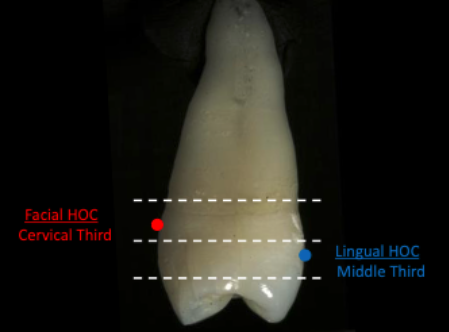
The lingual cusp tip on max 2nd PM is more pointed and sits ____ to the buccal cusp tip
mesial
max 2nd PM Root has mesial and distal root depressions, with the _____ root
depression being deeper
distal
As a general rule, the distal marginal ridge is _____ than the mesial marginal ridge for all posterior teeth- with ONE
EXCEPTION.
DUE TO THIS, one can see more of
the occlusal table from the distal view
compared to the mesial view.
shorter
due to a shorter, more irregular central groove with multiple supplemental grooves radiating from it the max 2nd PM has what unique appearnace?
wrinkled appearance
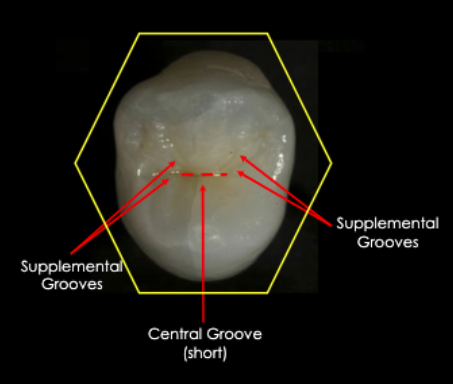
which max PM has a larger occlusal table
max 2nd PM
occlusal table of max 2nd PM is wider in which dimension
buccolingually than mesiodistally
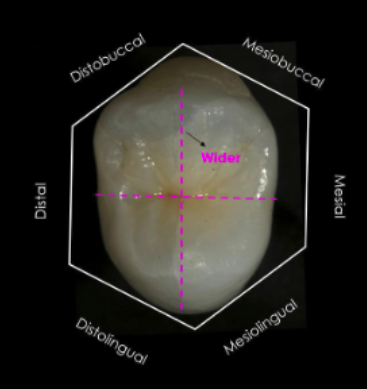
max 2nd PM occlusal view
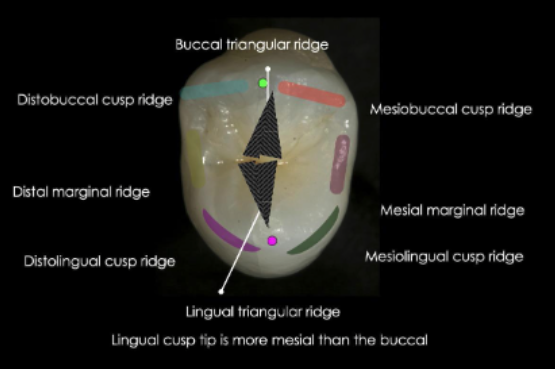
characteristics of max 2nd PM root?
1 root (usually)
blunt apex
wider buccolingually than mesiodistally
cervical cross section shape of max 2nd PM
flattened oval
max 2nd PM usually has 1 root canal but can possess 2.
1 canal % of time
2 canals % of time
One canal 60% of the time
two canals 40% of the time (B & L)
how many pulp honrs on max 2nd PM
2
root canal of max 2nd PM is very broad in what dimension
buccolingually and narrow mesiodistally
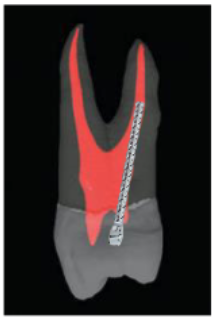
what clinical consideration is this
post placement (2nd max PM)
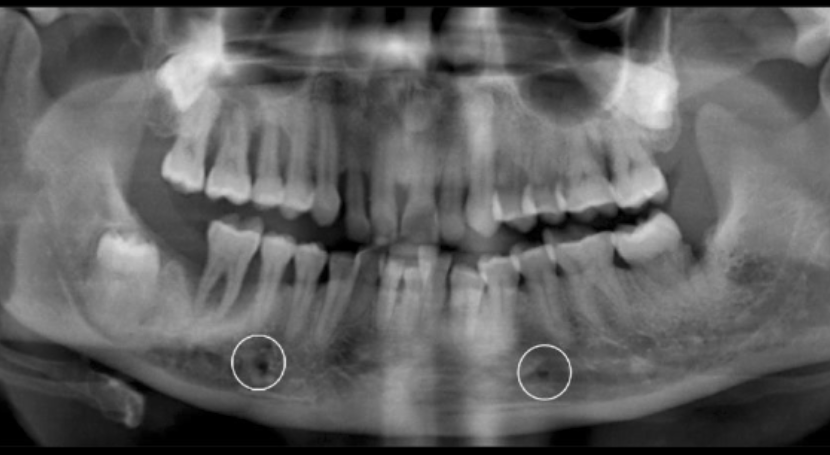
what is circled
mental foramen
1st mand PM is formed from __ lobes. 2nd PM?
4 lobes
4 or 5 lobes
perm mand PM are succedaneous/nonsuccedaneous
succedaneous
facial view shape of mand PM
trapezoidal
proximal view shape of mand PM
rhomboidal
function of mand PM
holding and grinding
calcification of mand 1st PM
1.75 - 2 years